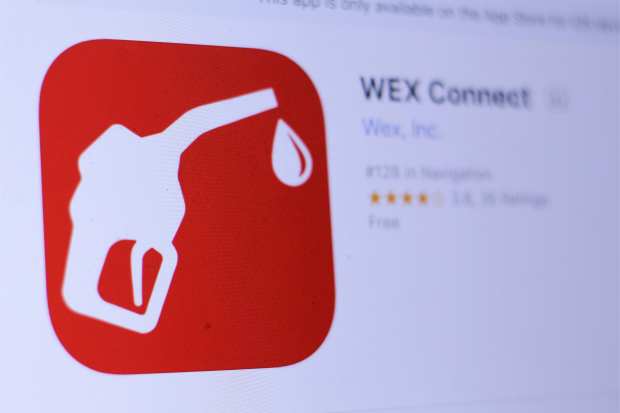WEX Posts Double-Digit Growth In Corporate, Travel Payments

WEX posted earnings results on Thursday (Oct. 31) that met expectations, while the firm showed payments volumes that were up double-digit percentages.
Management pointed to at least some softening in fleet customer trucking volumes, tied in part to a softening macro environment.
In terms of headline stats, the company’s consolidate top line was up 19 percent to just under $460 million. Adjusted earnings per share was $2.59, up 16 percent year over year.
Drilling down into the data, in earnings supplementals provided by the company, total purchase volume was up 10 percent to $22.4 billion. And within that tally, fleet purchase volumes were up slightly to $9.7 billion but revenues gained 11 percent to $277 million. Travel and corporate purchase volumes gained roughly 20 percent to $11.5 billion, while revenues gained 11 percent to $99.1 million. The health and employee benefits segment purchase volumes gained a bit more than 6 percent to $1.1 billion, and revenues were up 54 percent to $83 million. The firm said U.S. healthcare contribution was up 73 percent.
Travel and Corporate Processing Growth
Within travel and corporate, WEX said its internal processing platform now sees an annualized run rate purchase volume of $3.7 billion.
With more granular detail in fleet solutions, payment processing revenues were up 8 percent, according to company materials, to $125 million, while transactions gained 15 percent. Similarly, showing double-digit percentage gains were payment processing revenues within the travel and corporate solutions segment, which were up 57 percent to $85.1 million, while that same classification of revenue gathered 15 percent to $14.3 million within the health and employee benefit solutions segment.
In terms of transaction counts, total fuel transactions processed increased 14 percent from the third quarter of 2018 to 162.2 million, management said. Payment processing transactions increased 15 percent to 135.2 million.
During the conference call with analysts, WEX CEO Melissa Smith said the company is seeing the full impact of fleet card deals such as the ones with Shell and with Chevron. She said two pacts contributed about 60 percent of the payment processing growth of about 15 percent. The travel segment saw growth underpinned by accounts payable product sales. Within healthcare, she said, in the latest quarter there was 18 percent growth in SaaS accounts.
She said the lower fuel prices and unfavorable exchange rates had a negative impact on earnings growth of about 7 percent.
WEX CFO Robert Simon said the North American Fleet business grew by 13 percent and the firm’s over-the-road business was up by 9 percent, driven in part by new customer gains.
With commentary on the healthcare business, Simon said, “We believe that the fundamentals are in place for a continued middle to high-teens growth trajectory in the long run.”
Management took note of the macro environment on the call, stating that, per Simon’s observations, “when compared to the guidance we gave last quarter, we are forecasting the macroeconomic environment to be weaker, with 2 percent to 3 percent lower than anticipated fleet and travel customer volumes’ growth rates. More specifically, we have seen a deceleration in local fleet and over-the-road trucking volumes as well as related factoring revenue.” Guidance was given for full year 2019 revenue to be in the range of $1.736 billion to $1.746 billion. Against that backdrop, as Smith noted, same-store sales in the North American fleet were down about 2.5 percent.
Said Smith: “It was fairly pervasive, where the kind of the call-outs being transportation and wholesale trade were a little bit worse. When we projected forward what we’re seeing, now our assumption is that, that is going to continue into the fourth quarter. It’s something we saw a little bit weak in the second quarter, we talked about it in the last call that it was slightly off and it accelerated a little bit in the third quarter.” She noted that despite the deceleration, payment processing growth continues to be strong.
And in reference to EMV at the pump, fraud losses have proven to be minimal. Simon told analysts that “as we go into 2020 … we are not seeing any credit differences now from where we have been this year, around last year. You should expect to be on the similar range and obviously once at the end of next year, now, the chip and PIN is implemented, as we move into 2021, we expect to see a small improvement.”
